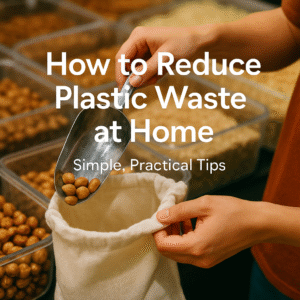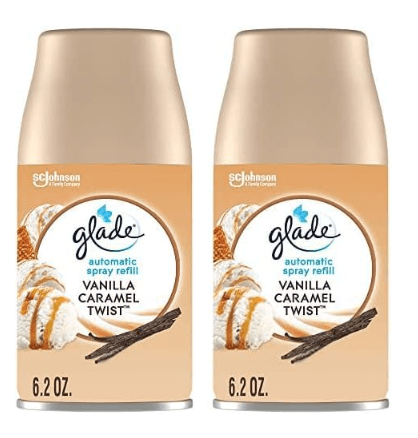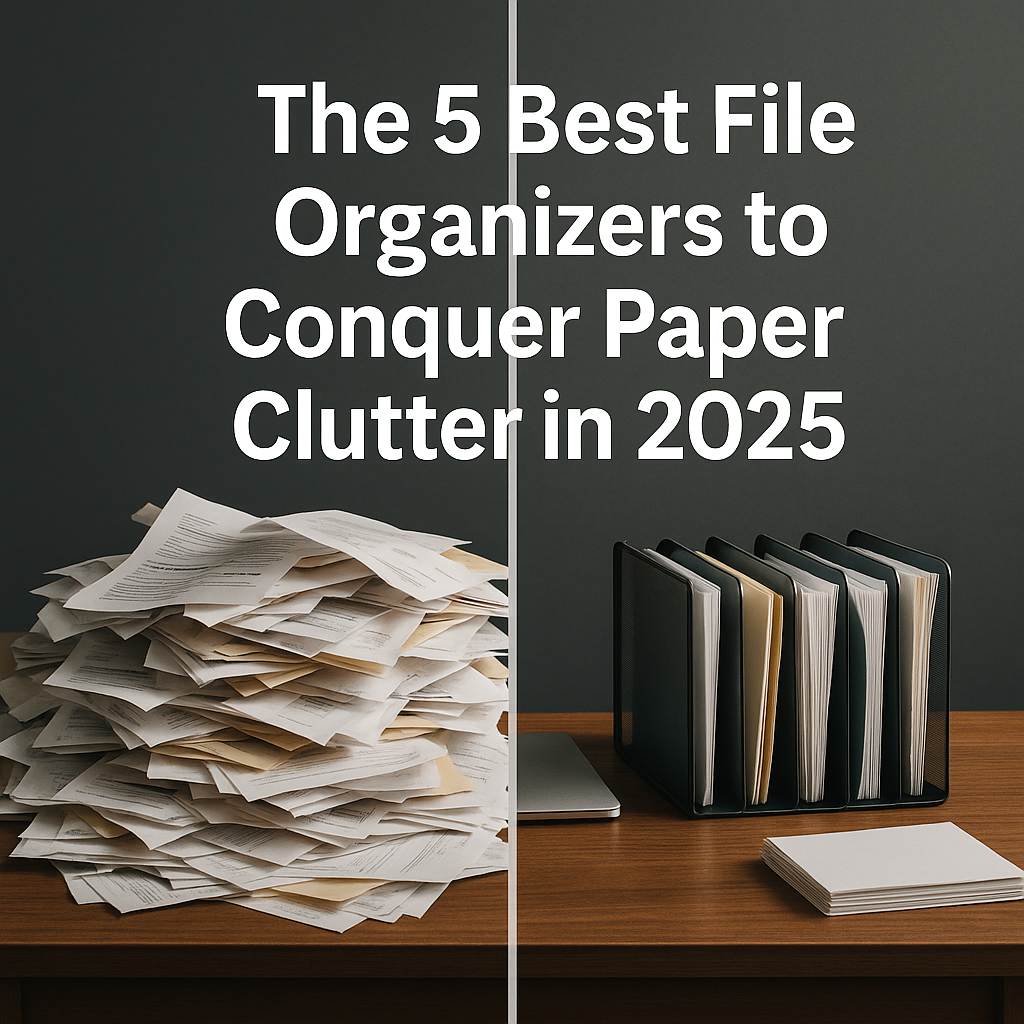How to Reduce Plastic Waste at Home: Simple, Practical Tips for 2025
Have you ever taken out your recycling and trash bins and felt a pang of guilt? You see a mountain of plastic containers, film, bags, and bottles and think, “There has to be a better way.” You’re not alone. The scale of the global plastic problem can feel overwhelming, but the truth is that meaningful change starts right where you are: in your home. Reducing your family’s plastic footprint isn’t about achieving a “zero-waste” perfection overnight. It’s about making a series of small, conscious choices that compound over time into a significant impact.
As someone who has been on this journey for years, I can tell you that the key is progress, not perfection. My home isn’t 100% plastic-free, and yours doesn’t need to be either. This guide is designed to be a realistic, non-judgmental roadmap. We’ll walk through your home, room by room, and identify simple, practical swaps that are easy to implement and maintain. We’ll focus on the biggest offenders first, so you can make the most impact with the least amount of stress. Let’s start building a healthier, more sustainable home together.
A Note on Our Recommendations: This article contains affiliate links to products we personally use and believe in. If you make a purchase, we may earn a commission at no extra cost to you. Our goal is to recommend durable, effective tools that make a sustainable lifestyle easier.
The “Why”: More Than Just a Pretty Planet
Reducing plastic isn’t just about saving turtles (though that’s a great reason!). It’s about our own health and well-being. Many plastics contain chemicals that can leach into our food and water, and the production and disposal of plastic contribute to pollution that affects our air and ecosystems. By making conscious choices, we’re not only helping the planet, but we’re also creating a healthier, less toxic environment for our families.
5 Quickest Wins to Reduce Plastic Today
- Always Carry a Reusable Water Bottle: This one habit can eliminate hundreds of single-use plastic bottles per year.
- Bring Reusable Shopping Bags: Keep them in your car so you never forget. This includes smaller mesh bags for produce!
- Say No to Plastic Straws: Either go without or carry a reusable alternative.
- Switch to a Reusable Coffee Cup: Many coffee shops even offer a discount for bringing your own.
- Pack Lunches in Reusable Containers: Ditch the plastic wrap and sandwich bags for good.
A Room-by-Room Guide to a Low-Plastic Home
The Kitchen: The Biggest Offender
The kitchen is ground zero for plastic waste in most homes. From food packaging to cleaning supplies, it’s everywhere. But this also means it’s the room with the most opportunity for impactful change. Let’s break it down.
1. Grocery Shopping & Food Storage
- The Obvious Swap: Reusable Totes. This is the easiest and most impactful change. Invest in a set of sturdy, washable tote bags and make it a habit to bring them everywhere.
- Level Up: Reusable Produce Bags. Those flimsy plastic bags in the produce aisle are a major source of waste. A set of lightweight, washable mesh bags is a perfect replacement for fruits and veggies.
- Ditch the Cling Film: Plastic wrap is impossible to recycle and is used for mere hours. Replace it with beeswax wraps (for covering bowls and wrapping sandwiches) or simply put food in a container with a lid.
- Break Up with Ziploc Bags: This was a hard one for me, but reusable silicone bags (like Stasher bags) are a game-changer. They’re durable, washable, and can be used in the freezer, microwave, and dishwasher.
- Buy in Bulk: When possible, use your own containers or reusable bags to buy items like oats, nuts, and grains from the bulk bins at your grocery store.
2. Drinks & Beverages
- The Reusable Water Bottle: This is non-negotiable. A high-quality, insulated stainless steel bottle will keep your water cold for hours and last for years.
- Rethink Your Coffee Routine: Single-use coffee pods are an environmental nightmare. Switch to a French press, pour-over, or a drip coffee maker with a reusable filter. If you buy coffee out, always bring a reusable travel mug.
- Skip the Soda Bottles: If you love fizzy drinks, consider a home soda maker like a SodaStream. You can carbonate your own water and add natural flavors, eliminating countless plastic bottles.
3. Cleaning Supplies
- Stop Buying Water: Most liquid cleaners are 90% water in a plastic bottle. Switch to concentrated refills or tablet-based systems (like Blueland) where you just add water to a reusable spray bottle.
- DIY Cleaners: For many jobs, a simple solution of white vinegar and water in a glass spray bottle is just as effective and completely plastic-free.
- Ditch the Plastic Sponges: Most kitchen sponges are made of plastic and shed microplastics down the drain. Switch to a wooden dish brush with replaceable heads, a coconut fiber scour pad, or a washable Swedish dishcloth.
The Bathroom: The Hidden Plastic Zone
The bathroom is filled with hidden plastic. From shampoo bottles to toothbrushes, it’s a major source of single-use waste. Here are some simple, effective swaps.
- Embrace the Bar: Switch from liquid body wash and shampoo in plastic bottles to solid bars. Shampoo and conditioner bars have come a long way and work wonderfully, eliminating packaging entirely.
- Refill Your Hand Soap: Instead of buying a new plastic soap dispenser every time, buy soap in bulk or in concentrated tablet form and refill a glass or ceramic dispenser.
- Switch Your Toothbrush: A bamboo toothbrush is a fantastic, biodegradable alternative to its plastic counterpart.
- Rethink Your Toothpaste: Look for toothpaste that comes in a recyclable metal tube or try innovative toothpaste tablets that come in a glass jar.
- Sustainable Floss: Most dental floss is plastic thread in a plastic case. Look for floss made from silk or corn fiber that comes in a refillable glass dispenser.
- Choose a Better Razor: Instead of disposable plastic razors, invest in a high-quality metal safety razor. You only need to replace the small, all-metal blades, which are widely recyclable.
Part 3: Helpful Tools for a Low-Plastic Life
Making these changes is easier when you have the right tools. These are durable, high-quality products that are a worthwhile investment in a more sustainable lifestyle.

BAGGU Standard Reusable Shopping Bags
These aren’t your average grocery totes. Made from ripstop nylon, they are incredibly strong and can hold up to 50 pounds. The best part? They fold down into a tiny, flat 5×5 inch pouch, making them easy to stash in a purse, backpack, or glove compartment so you’re never without one.
See it on Amazon
Ecowaare Reusable Mesh Produce Bags
This set of 15 bags in various sizes is the perfect replacement for single-use produce bags. They are lightweight, breathable, and strong, and the drawstring closure keeps everything secure. The cashier can easily see the produce codes through the mesh, and you can even wash your produce right in the bag at home.
See it on Amazon
Stasher Reusable Silicone Storage Bags
Stasher bags are the gold standard for reusable food storage. Made from pure platinum silicone, they are a safe and incredibly durable alternative to plastic bags. They’re freezer-safe, microwave-safe, dishwasher-safe, and even oven-safe. I’ve had mine for years, and they are perfect for everything from storing leftovers to marinating food.
See it on Amazon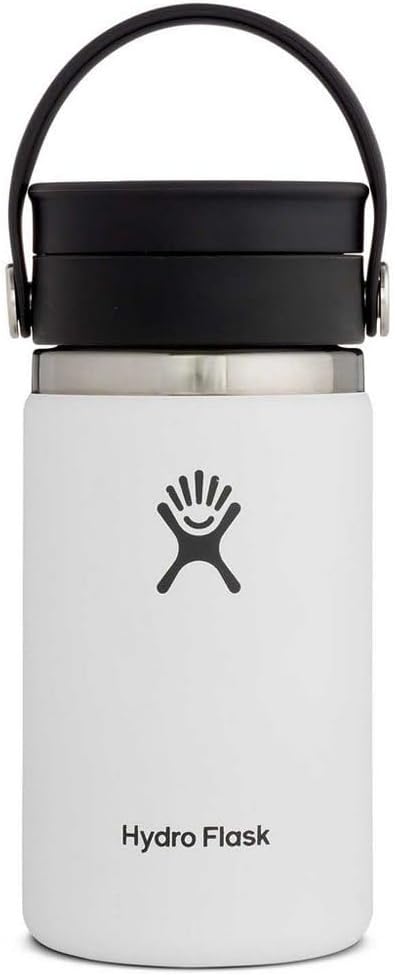
Hydro Flask Wide Mouth Bottle with Straw Lid
Investing in a water bottle you love to use is the key to building the hydration habit. Hydro Flask’s professional-grade stainless steel and double-wall vacuum insulation keep drinks ice cold for up to 24 hours. It’s durable, comes in a huge range of colors, and will last for a decade or more, preventing thousands of plastic bottles from entering the waste stream.
See it on Amazon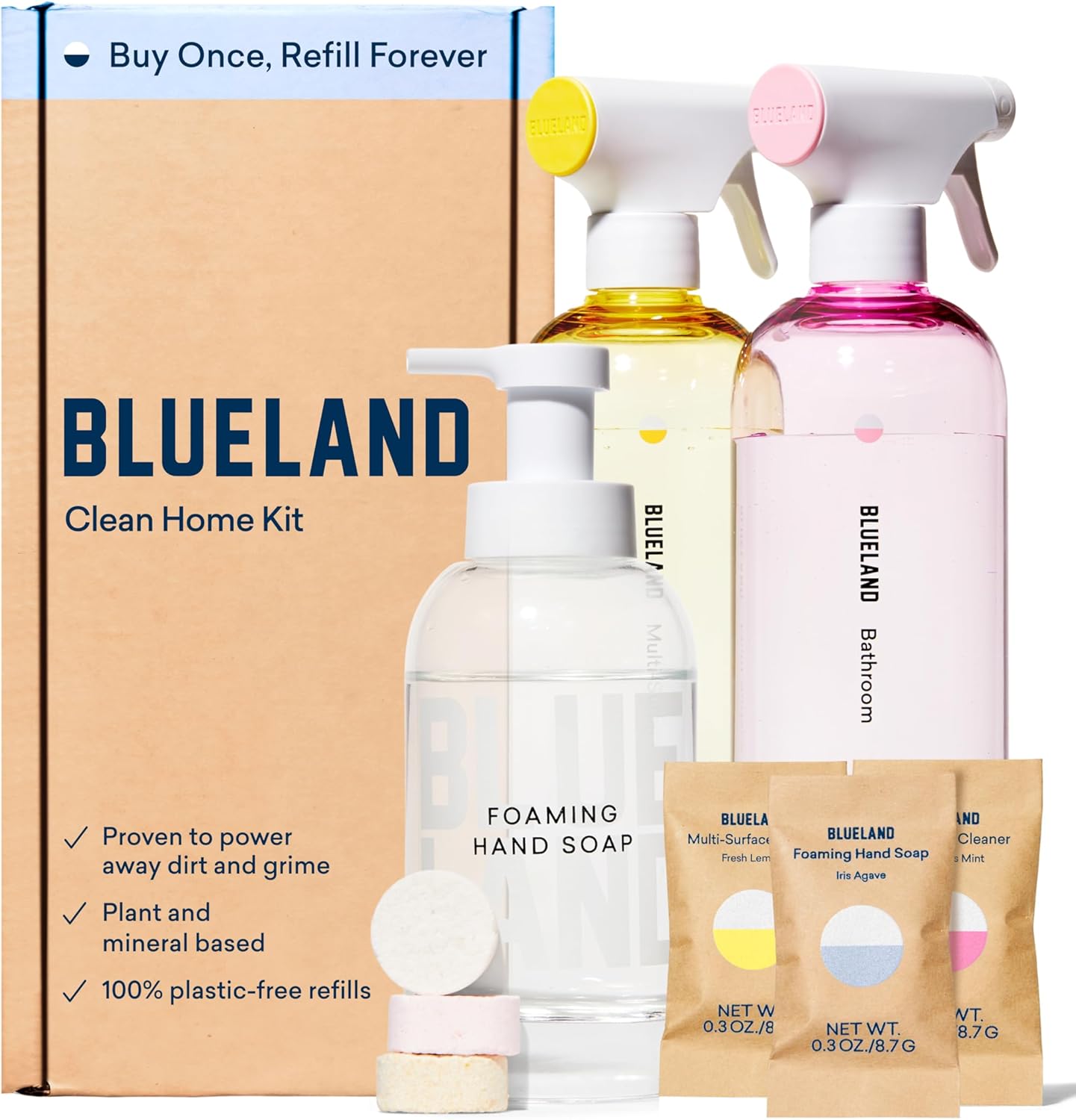
Blueland Clean Essentials Kit
Blueland’s innovative system helps you break the cycle of buying new plastic spray bottles. You get three beautiful, shatterproof “Forever Bottles” and small cleaning tablets. You simply fill the bottles with water, drop in a tablet, and you have a powerful multi-surface, bathroom, or glass cleaner. The refills are tiny and come in compostable packaging. It’s a brilliant, sustainable system.
See it on AmazonFrequently Asked Questions About Reducing Plastic
Is trying to live plastic-free expensive?
There can be an upfront investment. A high-quality reusable water bottle or set of silicone bags costs more initially than a pack of disposable ones. However, over time, you save a significant amount of money by not having to constantly repurchase single-use items. Think of it as a one-time investment that pays dividends for years.
Recycling is good, but why is *reducing* more important?
Recycling is an important part of waste management, but it’s not a perfect solution. The process requires a lot of energy and water, and sadly, only a small percentage of what we put in the recycling bin actually gets recycled. Reducing our consumption at the source is far more impactful because it prevents the waste from ever being created in the first place.
What is the single most impactful plastic item to stop using?
While it varies by lifestyle, for most people the “big four” are the most impactful: plastic shopping bags, single-use water bottles, disposable coffee cups, and plastic straws. Targeting these four items first will dramatically reduce your personal plastic footprint.
I feel overwhelmed. Where should I even start?
Do not try to do everything at once! That’s a recipe for burnout. Pick one single thing from this list that feels easy and manageable to you. Maybe it’s putting reusable bags in your car right now. Maybe it’s committing to using a reusable coffee cup this week. Master that one habit until it’s automatic, then come back and choose another. Small, consistent steps are the key to lasting change.
Progress, Not Perfection
The journey to a low-plastic life is not a race. It’s a continuous process of learning and making more conscious choices. Every time you refuse a plastic straw, bring your own bag, or refill a bottle, you are casting a vote for a healthier planet and a healthier you. Celebrate every small victory. The collective impact of our individual efforts is a powerful force for change, and it starts with the simple, practical steps you can take in your own home today.
